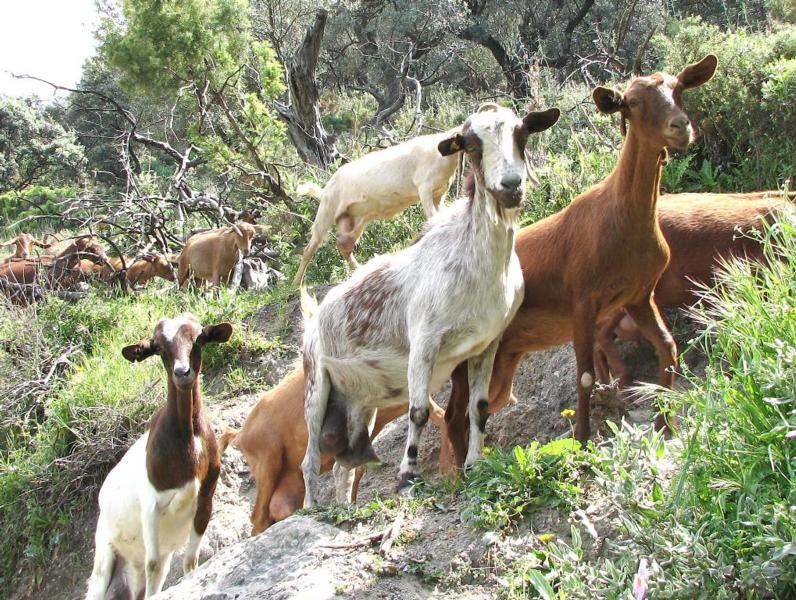Cabra al Vino Info
The 'Drunken Goat'
No, it's not a party in the pasture for those happy goats but another wonderful Spanish cheese for this month’s recipe and its just in time for this spring's freshening goat's milk.
We know you just can't wait!
It's spring and the goats are back on the grass with milk coming soon!
This month's cheese has a wonderful snow white paste which is very soft and supple with a few small gas holes distributed throughout. The rind has a beautiful purple color to it and the taste and aroma of the wine have migrated throughout the cheese.
A Bit of History
For centuries, wine and cheese have gone well together, so it was not surprising that the two would eventually come in one tasty package. This combo is not something new but a traditional bringing together of the milk and grape. It has probably been done for several hundred years.
n France, we see a similar cheese, called Tomme au Marc which is made with cow's milk from Savoie. This Tomme is aged for several months, covered in the skins and seeds (called marc in France) left over after pressing the wine.
In Italy, we find another similar cheese in the northeast called Ubriaco (the drunken cheese). This is a very different cheese based on a Montasio or Monte Veronese cheese but buried in the same skins and seeds (called vinnacia in Italy).
In Spain, our focus cheese is the result of soaking a very young goats milk cheese in a regional wine instead of the marc/vinnacia mentioned above.
More specifically, it is a regional cheese produced in southeast Spain around the region of Murcia. Its real name is Vino al Murcia but sometimes it is known as Cabra al Vino and without the wine bath it is simply called Cabra al Murcia.
A further variation is Cabra al Romero, meaning Goat Cheese with the rind covered in rosemary.
The cheese comes mostly from an area around the village of Jumilla, located in the province of Murcia. This area lies southeast of Madrid on the way to Caragena and the sea. The area is also known for its wonderful wines made from the Monastrell grape, so the coming of milk and grapes was not such a long stretch of the imagination.
Why Soak Cheese in Wine?
Well, other than the simple fact that it tastes really good, there are more functional reasons.
Once a cheese leaves the mold and is salted, it is a wonderful site for all kinds of molds, yeast and bacteria to settle onto and grow.
So what is a cheese maker to do? Other than waxing or sealing in plastic, one option to control surface growth would be to develop a natural rind by allowing the rind to dry down for a few days and then regular brushing or washing to eliminate them. It's a good plan but more work.
However, somewhere along the path of experience, folks realized that washing with salt or an acidic wash would inhibit the surface molds from growing.
The fact is that these yeast, molds, and bacteria are rather simple forms of life and as such only do well in a rather narrow range of conditions including temperature, salt, acid, moisture, etc.
Normally, a cheese enters the aging room with a moderate level of acid (pH ~ 5.2) and this is easily a good range for the yeast and molds to grow.
Wine, however, is much more acidic (pH 3.2-3.5) thus making it a much more difficult place for molds to grow. Also, the tannins and other components of the wine make the surface much less desirable for surface growth.

































